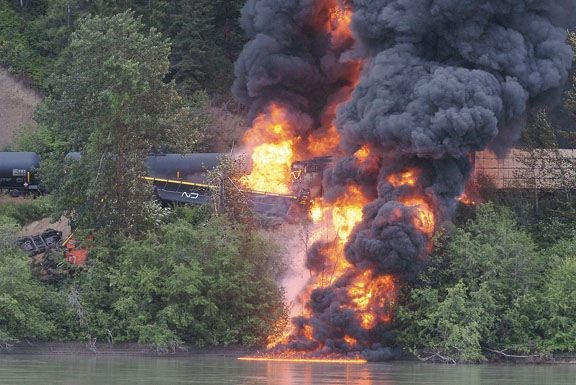The City of Prince George and CN Rail need to take a number of preventative steps to make sure the city's main well water source is no longer vulnerable to "catastrophic" damage from hazardous spills.
Losing any of the wells "would be catastrophic for the city in terms of quality of life, sustainable economic growth, and environmental damage," said a report for city council by R. Radloff & Associates Inc., which the city hired for a risk assessment.
The Nechako Aquifer has three "high-capacity" wells, worth $6 million each, that supply 95 per cent of the water used by industry and homes. None of them have "a confining unit to protect from surface spills" and they sit between the rail lines and the river.
Those wells are all situated within 180 metres of the CN Railway, said the city's report on the risk to drinking water from train derailment.
The aquifer is a "goldmine," the Radloff report said, but very vulnerable to hazardous materials.
"The Nechako Aquifer is a highly valuable natural feature, not only because of its high-yield and easy accessibility, but also because it produces water which tastes good, has ideal hardness levels, and has virtually no incidents of bacteriological contamination."
Derailment-related spills are the biggest threat to the waterway, it said.
Prince George had 11 rail "incidents" in 2013: eight yard derailments, three collisions, and five dangerous good incidents.
That was slightly down from the 13 reported incidents in 2012: 11 yard derailments, two collisions, as well as eight dangerous good incidents.
The report did not provide data for 2014 and 2015.
The type of hazardous material that makes it way through the city is largely unknown, the authors noted.
"Much of the time, the information related to the transit of dangerous goods was only reported after an accident, leak or spill had occurred, thus the data in this report is incomplete."
Although not rail-related, the authors noted two wells in the last 20 years were shut down due to spill contamination (from tanker trucks) so "the vulnerability of the currently active city wells needs to be taken seriously."
In 2007, a CN derailment leaked more than 1,600 litres of diesel fuel and 171,000 litres of gasoline with "an undetermined amount" that seeped into the ground or flowed into the river.
The report said forecasts show Prince George should see "significant growth in rail traffic" because of its prime location between Edmonton and Prince Rupert and from north to south, it serves as the "Gateway to the North."
It offered a number of recommendations for the city to focus on prevention, but also proper responses in the event of a spill.
CN should reduce train speeds, increase its track maintenance and provide advance notice when it transports dangerous goods, the report said.
The city needs to have remote pump shutdown and operation capabilities, an emergency water quality monitoring plan, commission more studies and widen the city's groundwater protection areas.
Together, they should create a joint emergency response committee, including plans and contacts as well as install grade crossing arms.
In his report to the city, engineering and public works general manager Dave Dyer said staff would offer further investigation and conceptual design work to push those recommendations forward.
That's expected to lead to added capital projects up for consideration with the city's five-year financial capital plans.



